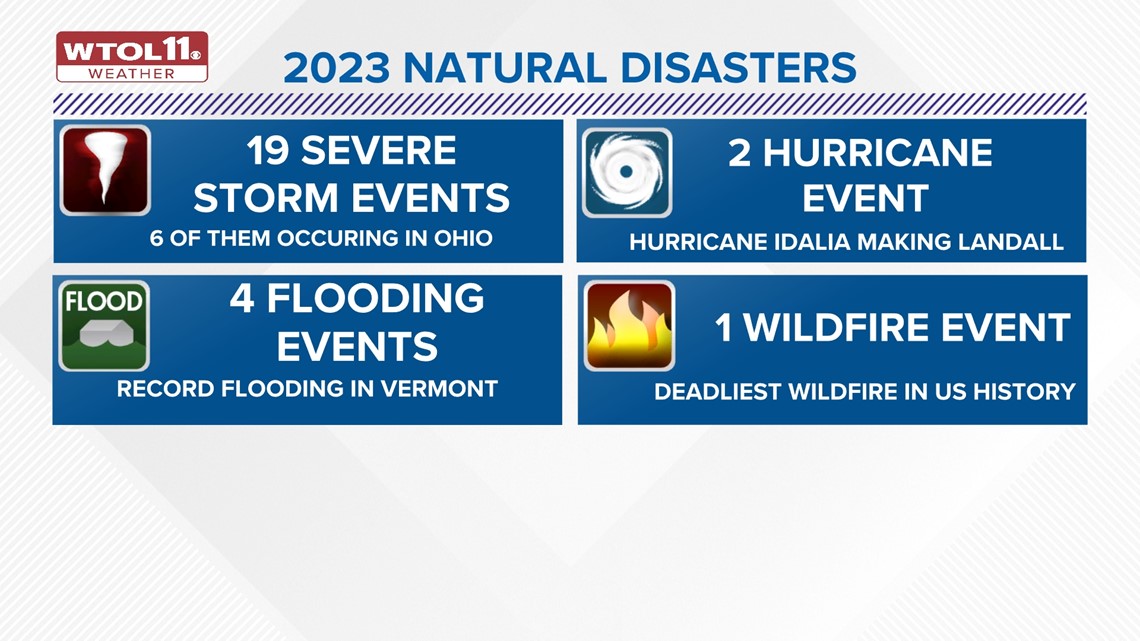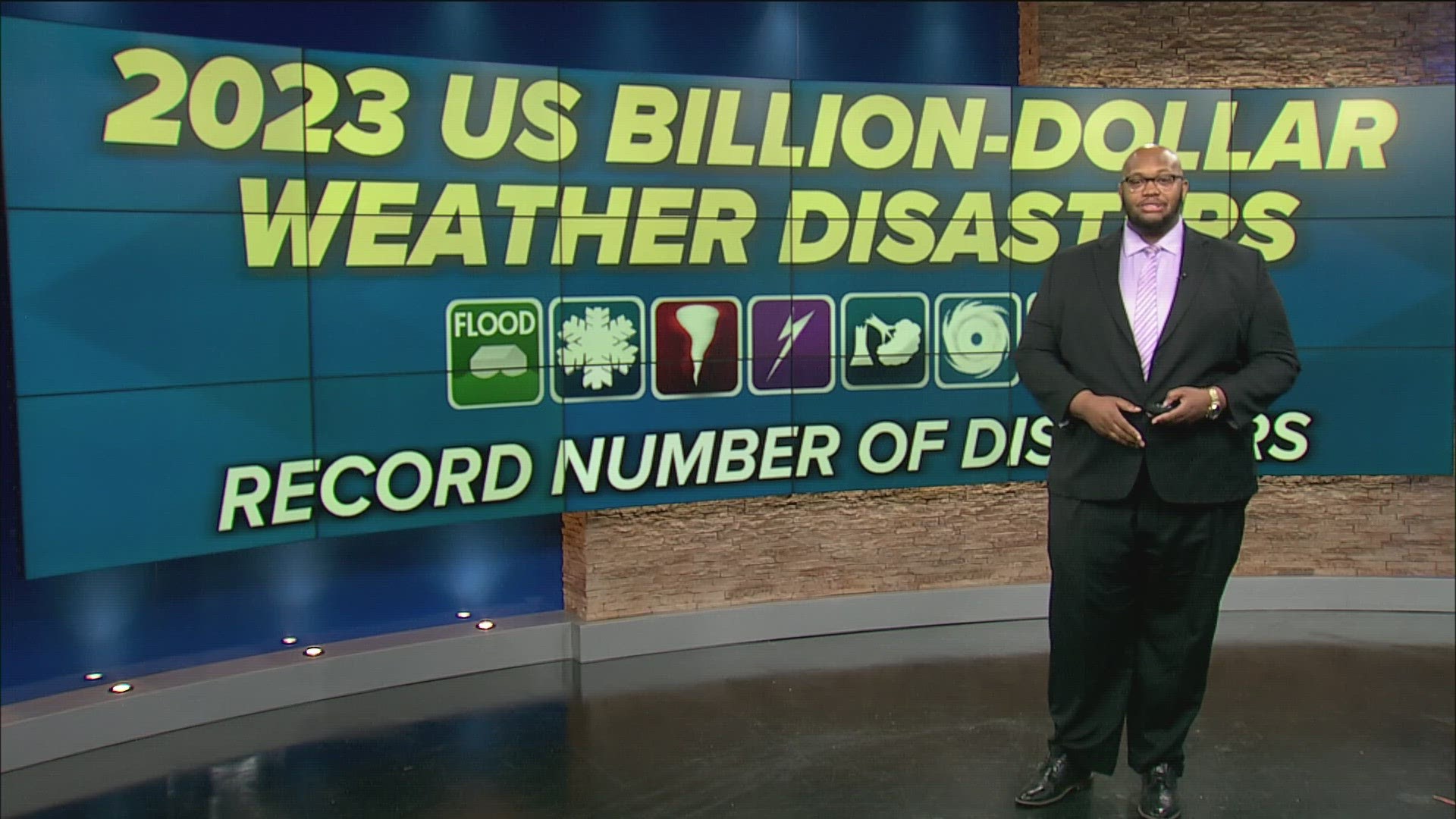TOLEDO, Ohio — The United States faced an unprecedented $28 billion in weather and climate disasters in 2023, setting a new record for inflation-adjusted damages.
The surge in both the number and cost of these catastrophic events is attributed to a dangerous combination of factors, including increased exposure, vulnerability, and the accelerating impacts of climate change.
The rising vulnerability to drought, the lengthening wildfire seasons in the Western states, and the growing frequency of extremely heavy rainfall in the eastern states are key contributors to the escalating crisis. As these extremes become more frequent, the challenges for communities and cities to recover intensify each year.
In 2023 alone, the nation experienced a total of 28 separate billion-dollar weather and climate disasters, surpassing the previous record of 22 events set in 2020.
Ohio bore a significant portion of the burden, with seven separate billion-dollar disaster events, primarily stemming from severe storm impacts, including tornadoes, hail and high-wind damage. The financial toll in Ohio alone amounted to about $1.9 billion.


The year began with an active severe storm season across the central and eastern U.S., marked by destructive tornadoes, severe hail, and high winds.
Notably, 2023 saw a high count of high-wind reports across the country, second only to the historic year of 2011 in the past two decades.
The second half of the year witnessed a relentless onslaught of severe weather events, including the tragic wildfire in Hawaii, flooding in the Northeast, Hurricane Idalia, severe weather across the North Central states, and a powerful east coast storm from Florida to Maine.


While damaging events offer a silver lining by providing insights into areas of vulnerability and resilience, the urgent need to reassess where and how communities build, coupled with investments in 21st-century climate-resilient infrastructure, has become increasingly apparent.
As the frequency and intensity of weather and climate disasters show no signs of abating, a proactive approach to adaptation and mitigation becomes paramount for the nation's resilience in the face of an uncertain climate future.
More on WTOL:

